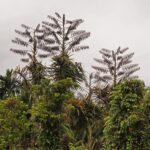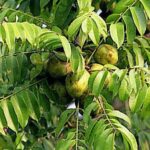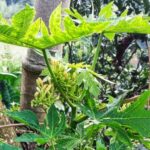Vegetable ferns (Diplazium esculentum (Retz.)) are among the few wild vegetables Mentawai people in the forests eat regularly on Siberut Island. By Mentawais, they are called ‘Laipat.’ Other wild vegetables are cassava leaves, ginger flowers, taro stalks, and wild eggplants. In times of hunger, Mentawais also eat shoots of sugar palms. But generally speaking, all these wild vegetables are just an irregular addition to the regular diet of sago/taro/bananas and meat.
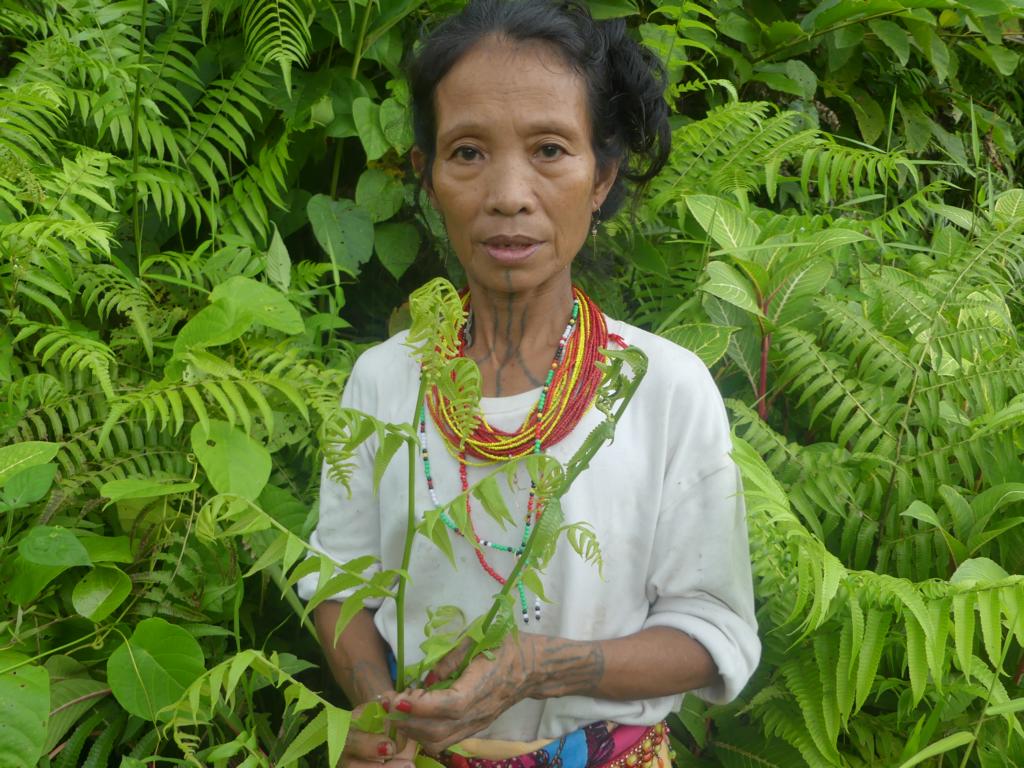
Where do vegetable ferns grow?
Vegetable ferns (Diplazium esculentum) prefer to grow at the edge of forests towards cultivated land. However, distinguishing between cultivated and non-cultivated land is often difficult because most of the plants grow wildly mixed together. Edible, ornamental, medical, and wild species strive at the same time and place for sunlight and nutrients.
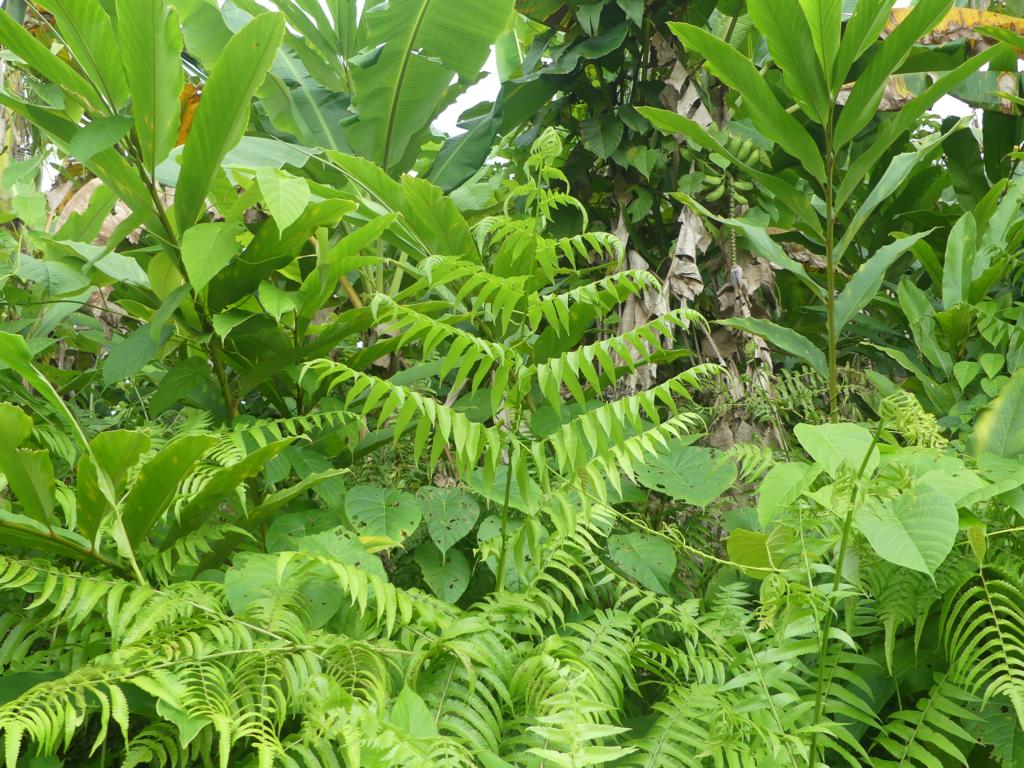
Therefore, the lady of the house (Uma) occasionally takes a machete and cuts down less desirable species. And suddenly, this land is called cultivated. Only taro gardens are regularly replanted, weeded, and protected by the forest-dwelling Mentawais.
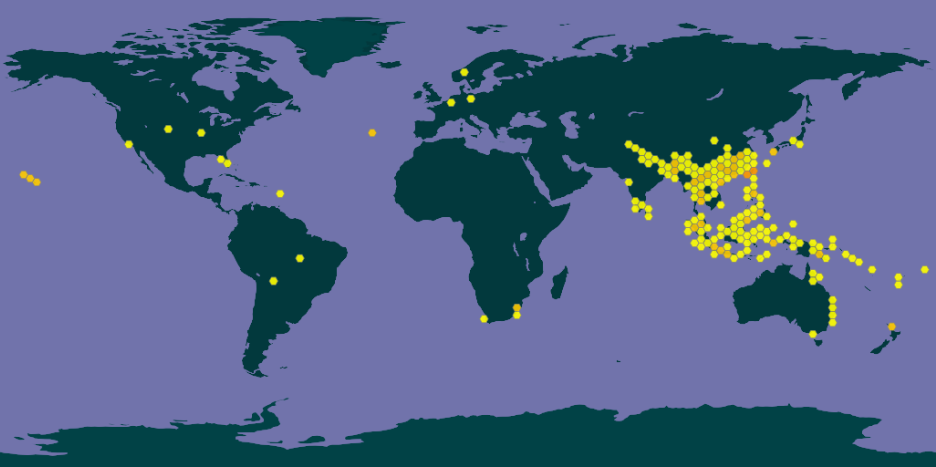
D. esculentum ferns are widely distributed in South- and Southeast Asia and the Pacific Islands. They also encroached on many other areas around the world. The most common English name for this species is ‘Fiddlehead fern.’ This name is quite misleading, as many other fern species, which can be toxic or cancerous, also have fiddleheads in early growth. D. esculentum is a revered national wild food vegetable in the Philippines called Pako.
Why are Mentawai people eating vegetable ferns?
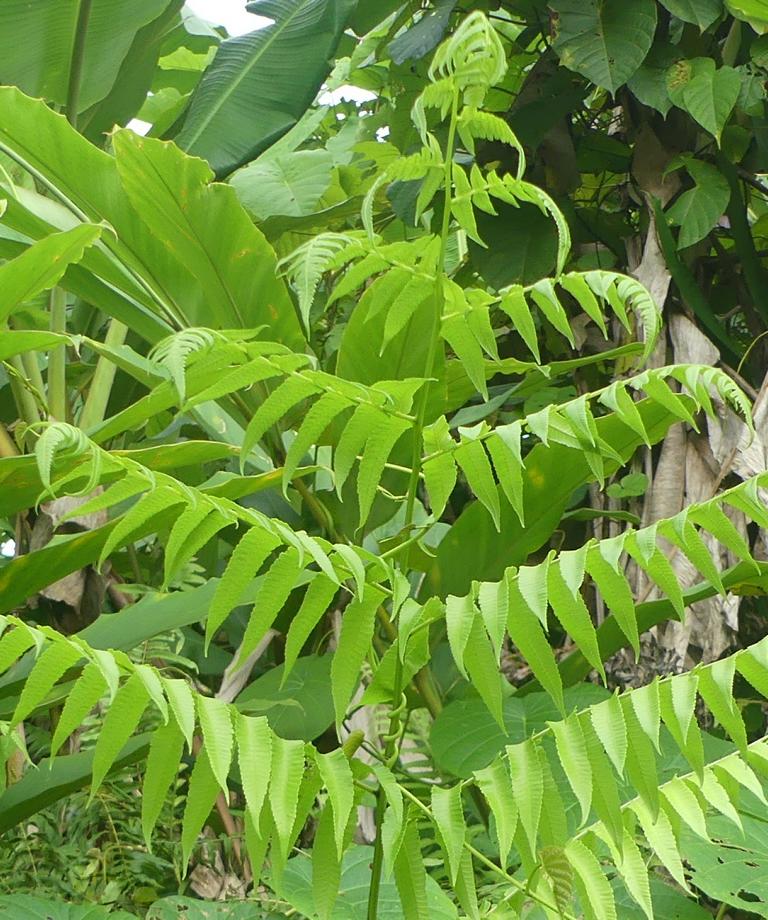
In various in-depth studies, it is stated that Mentawai people cultivate multiple plants for food. This is correct for Mentawais living in villages. But for the last 1k remaining forest dwellers, it is not. According to my mentor – Aman Aru, in the Buttui area – they cannot plant crops or vegetables. The reason for that is that there are too many rats around who are feeding on these plants. A notable exception is cassava, which tubers are not eaten up by them. Trapping or otherwise eradicating the rats would be Sisyphus’ work in the forest environment. Therefore, they must exploit natural resources that provide them with minerals and vitamins for their starchy staple food.
Which parts of vegetable ferns are being collected and eaten?
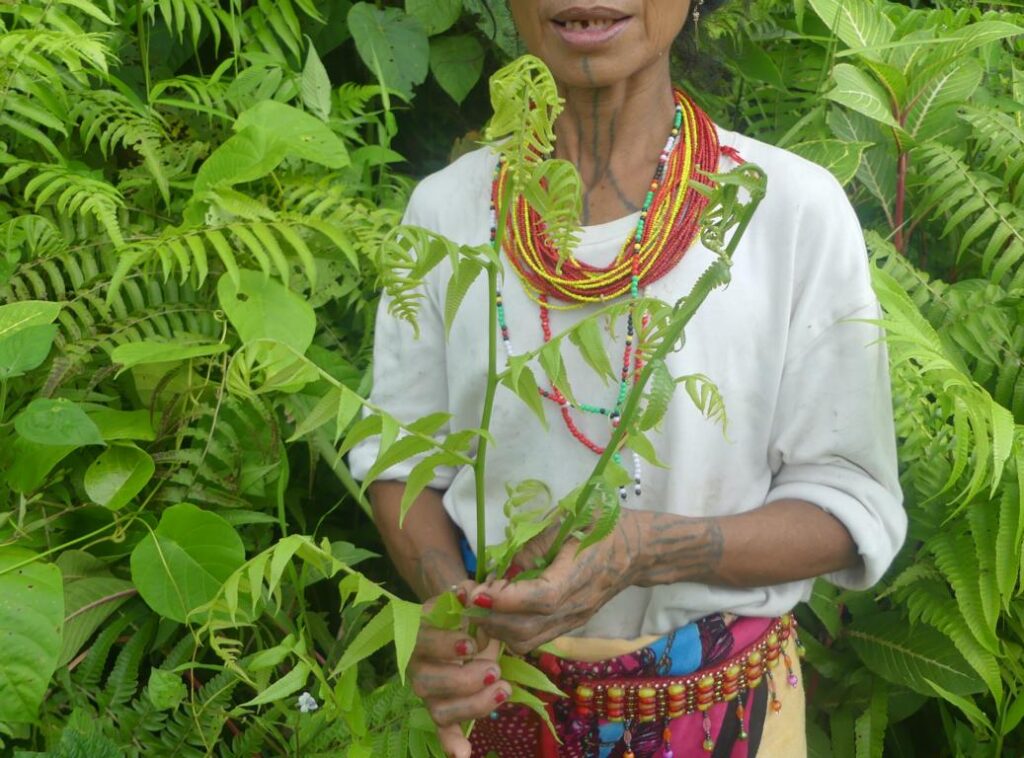
Mentawais only collect young shoots, where the apex of the fern blade is undeveloped and not pointing upwards. The attached pictures show that the uppermost 50cm/20’’ from these shoots will be harvested. Collected shoots are blanched and eaten as a side dish to sago sticks. Besides a bit of salt, no spices are added.
It should also be mentioned that collecting D. esculentum shoots is traditionally a source of income for older women and widows. According to this source, they sell them to small Minangkabau restaurants in Muara Siberut.
What is the nutritional value of vegetable ferns (Diplazium esculentum)?
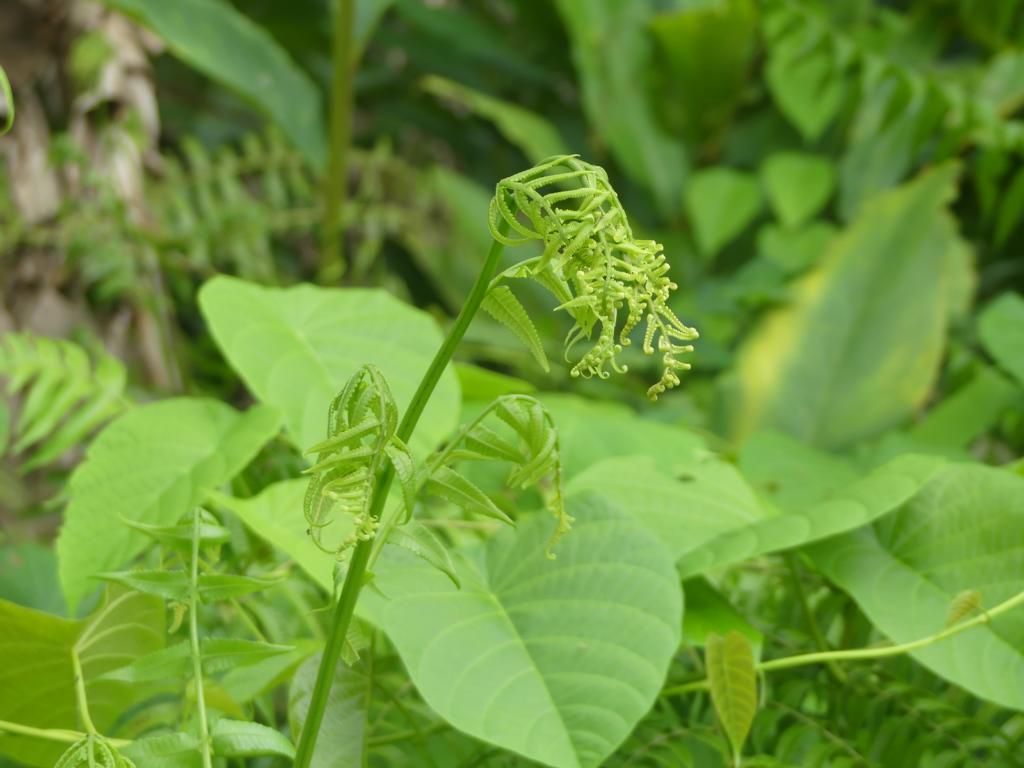
The moisture content of the leaves is at around 90%. The split up of the remaining dry matter amongst fiber (about. 19%), fat (about. 29%), protein (about. 37%), and carbohydrates (about. 15%) is similar in all studies. It was also found that the fronds are rich in antioxidants (Vitamin C, etc.) and contain a high amount of Ca, Na, Zn, and Cu. Deviations are seen in measurements of the Fe content, depending on the various investigations.
Lessons learned from edible vegetable ferns on Siberut Island:
- Forest-dwelling Mentawai people cannot plant crops or vegetables besides protected taro gardens in the forest.
- Vegetable ferns are an indispensable addition to the starchy main diet.
- Only the tops of young shoots will be collected.
- Blanching is the Mentawai people’s preferred cooking method for vegetable fern shoots.
.



